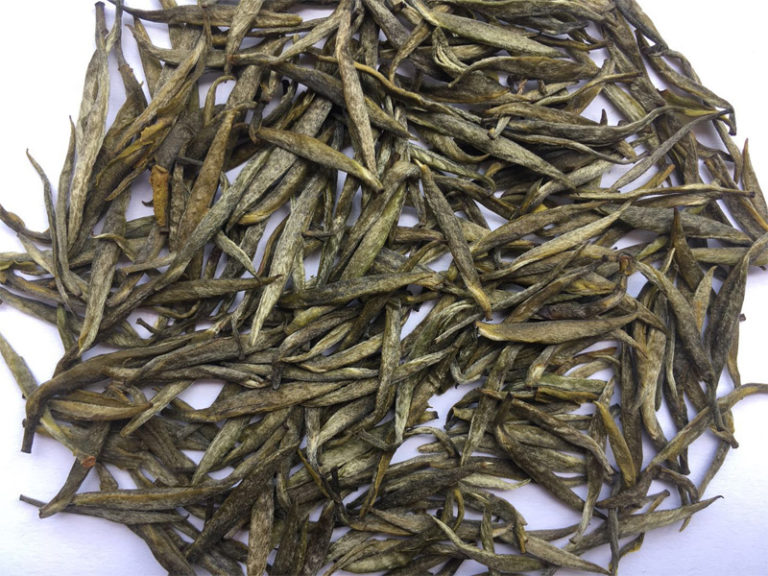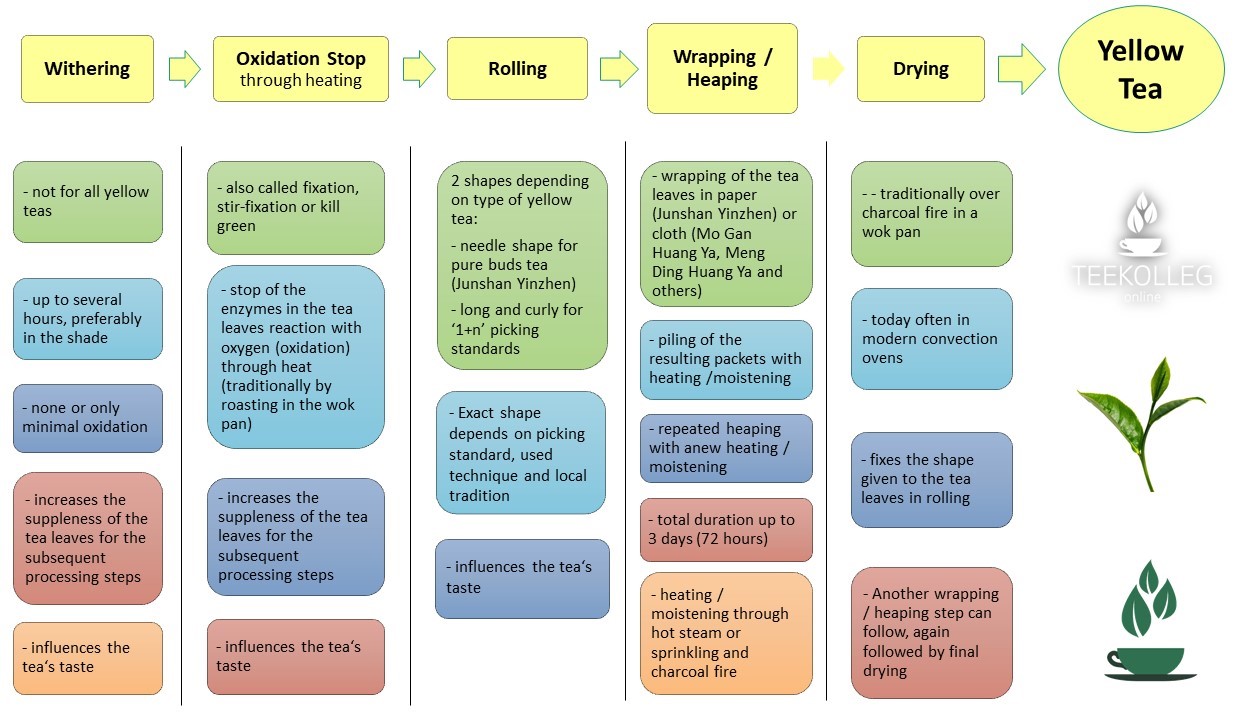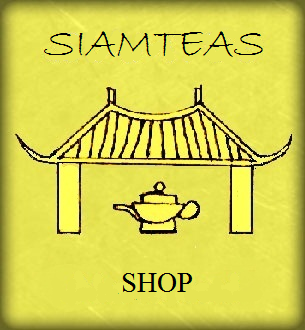After covering the processing of green, black, oolong and white tea , this lesson focuses on yellow tea processing.
A rare thing in China, yellow tea is nearly unknown in Europe to this day. On the one hand, this is due to the fact that the processing of yellow tea is so complex that only few Chinese producers still master the method. On the other hand, this complexity and resulting scarcity effect a price level that makes real yellow tea unsuitable for the mass market. As a result, the processing of most classic yellow teas in China today rather resembles that of green tea.
In fact, the processing of yellow tea differs from that of green tea only in one additional step. In turn, this step – wrapping and heaping the tea leaves before and / or after the oxidation stop – defines yellow tea as such. There are various stories and legends surrounding the origin of this method. There are sources telling about an “accident” that occurred in the production of green tea. Others claim that the method was deliberately developed in favor of specific changes compared to green tea. On the one hand, the “green taste” gives way to a milder and rounder overall taste. On the other hand, the desirable active ingredients of the unprocessed tea leaf are completely preserved with yellow tea processing.
Origin and History of Yellow Tea
The history of yellow tea begins a long time ago on a small island in Hunan’s Dongting Lake, Junshan Island. When exactly the monks in the former Daoist retreat developed the method for producing yellow tea blurs in the fog of time. What is certain, however, is that the tea from the 1 square kilometer island has been one of the most valued imperial tribute teas latest since the Song Dynasty (960–1279). However, Yunshan Jinzhen as we know it today might exist only since the early Qing dynasty (ca. 1700).
The island’s limited acreage is only one reason for the relative scarcity of the “yellow silver needle tea” grown here. The fact that the imperial court kept the exact manufacturing method secret for a long time also contributed to this. Furthermore, the high complexity and the time expense associated with the method set narrow limits to the spread of yellow tea production.
Types of Yellow Tea
The best-known and probably oldest yellow tea is Junshan Yinzhen. Junshan island’s “yellow silver needle tea” stands out from other yellow teas. One reason for this is the tea’s particularly demanding “pure bud” picking standard. Another is Junshan island’s specific terroir and tea plant varities. However, there are also differences in processing variations between China’s classic yellow teas. In addition to Junshan Yinzhen, these include Huoshan Huang Ya (Anhui), Mengding Huang Ya (Sichuan) and Mogan Huang Ya (Zhejiang).
Like many other teas, each type of yellow tea is tied to its place of origin. This means that there is a specific place where the interaction of local terroir, native tea plant variety and application of the relevant method defines the respective type of (yellow) tea. For example, a Junshan Yinzhen is only genuine when coming from Junshan Island .
Because of the high level of complexity of their traditional processing, these teas have also become rare at their respective places of origin. On the other hand, the basic principle of the method has been used elsewhere in numerous variations and modifications. Accordingly, yellow tea now comes from Yunnan, too, for example, but also from tea-growing regions outside of China.
Yellow Tea Processing Step-by-Step
The processing sequence of yellow tea basically resembles that of green tea, except for one processing step, “wrapping / heaping”. This process, actually consisting of several steps (wrapping, piling, moisturizing, heating, heaping) is defining for yellow tea as such. However, the exact design of this processing step varies depending on type of tea, producer and place of origin. Examples of such variations are the choice of wrapping material and the method of moistening and / or heating. In addition, this step can occur in the total processing sequence either once only or be repeated.
1. Withering
Also with yellow tea processing, the withering mainly takes place in favor of an increased suppleness of the tea leaves. Just as in green tea processing, it is essential that no oxidation processes occur. Therefore, withering as a processing step omits even completely for some types of yellow. Where is doesn’t, it is important that the leaf surfaces remain intact during the process.
Likewise, in favor of the least possible oxidation, cool temperatures are particularly favorable on the one hand. On the other hand, it has to be warm enough to achieve the tea leaves’ desired moisture loss of approx. 5%. Typical for the processing of yellow tea is therefore the withering of the tea leaves for several hours in a shady place outdoors.
2. Fixation / Oxidation Stop
Like green tea, yellow tea basically doesn’t undergo oxidation. Enzymatic oxidation processes are therefore stopped through heating the tea leaves quite immediately after picking. Accordingly, any withering phase is rather short.
With traditional yellow tea processing, the fixation of the tea leaves takes place by roasting in a wok pan. Today, more modern methods are available for this. However, since real yellow tea is anything but a mass product, the chances of traditional processing by hand are quite good. The same applies to the next processing step, the
3. Rolling
of the tea leaves. With the traditional method, this process already begins during the roasting in the wok pan. Because fixing the tea leaves requires relatively high temperatures, a person can only work the tea leaves in the wok for a short period of time. This is why in practice often several workers take turns.
With yellow tea processing, the target shape of the rolling process depends primarily on the particular type of tea. For example, with pure bud teas like the Junshan Yinzhen the needle shape is kind of obvious. On the other hand, yellow teas with a share of leaves rather tend to be given a long and curly shape whith rolling.
Today there are special mechanical and electrical devices and machines available for rolling the tea leaves. Instead of rolling during heating, switching between heating and rolling is typical when using such devices. This sequence will usually be repeated several times before the desired result is achieved.
4. Wrapping / Heaping for Yellow
The processing step of piling and heaping the tea leaves, often in combination with moistening and/or heating, defines the yellow tea as such. Strictly speaking, this is not a single processing step, but a whole processing sequence. The exact sequence and its placing in the overall processing sequence vary depending on type of tea, place of origin and producer. What actually happens to the tea leaves during this processing step is referred to as “spontaneous oxidation”.
After heating and rolling, the tea leaves are first wrapped in paper (Yunshan Yinzhen) or cloth (other types) to thick flat packets. Then these packages are stacked on top of each other. Depending on the type of tea, region and producer, the packets piled in this way can be moistened and heated. Examples of this would be treatment with hot steam or spraying with water and heating over charcoal. In order to enable uniform processes, the packages are repeatedly shifted during the process, which lasts up to 3 days. They can also be opened in between for the purpose of letting the tea leaves cool down.
The complexity and sensitivity of this process are the main reason for the rarity of yellow tea on the market. It may have been a long time ago that the method of making yellow tea was one of the imperial court’s best kept secrets. Nevertheless, only few producers today still master this process, in which the tiniest mistake will inevitably spoil the precious tea .
5. Drying
The final drying takes place at rather low temperatures (approx. 50 ° C) and in a correspondingly gentle manner. While charcoal fire usually provided for this in the old days, special convection ovens with simple temperature control often provide for this today.
One more thing, on my own account…
Do you like this article? Support the maintenance and further development of “My Little Tea School – The ABC of TEA” through your shopping at





